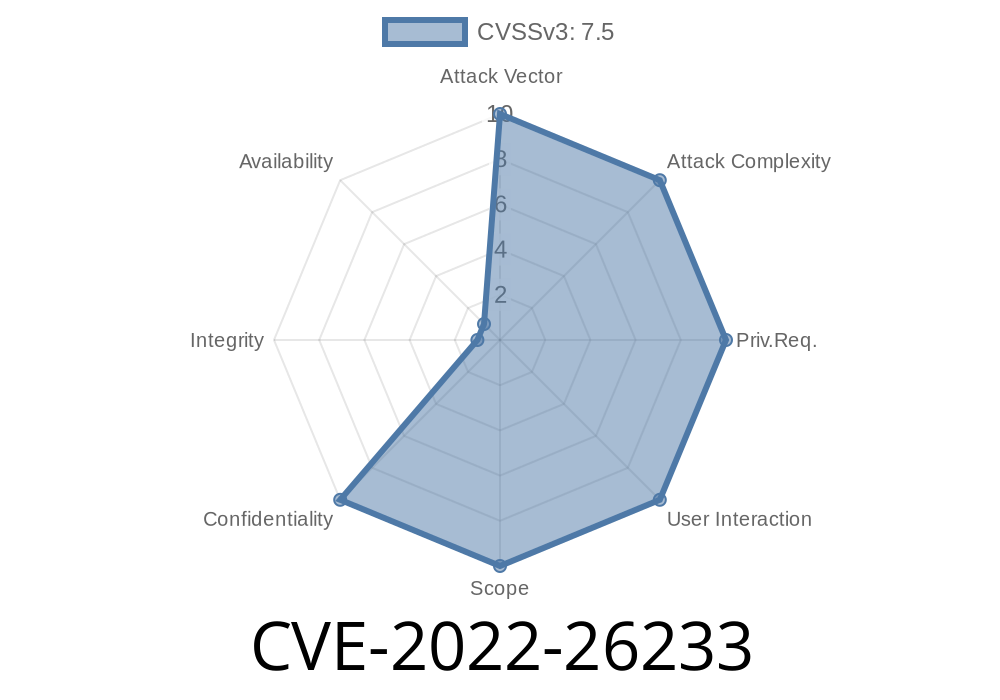Recently, cybersecurity researchers uncovered a new vulnerability in the Barco Control Room Management Suite (version 2.9 Build 0275). The vulnerability, designated as CVE-2022-26233, leaves the software exposed to directory traversal attacks. Such exploits can grant hackers unauthorized access to sensitive data, network components, and even lead to the compromise of the entire control room system. In this comprehensive post, we will take an in-depth look at the vulnerability, the exploit code used, and measures you can take to eliminate the risk. As always, make sure to check the links for original references and up-to-date information to stay on top of any emerging threats.
Overview of the Vulnerability
The Barco Control Room Management Suite is an integrated solution for managing and operating control room environments efficiently. It aims to provide users with a seamless and user-friendly experience to handle and monitor the visual and technical aspects of a control room. Given the sensitive nature of control room operations, any vulnerability within such software can lead to the exposure of critical information and resources.
The vulnerability CVE-2022-26233 allows attackers to exploit insecure file path handling in the software. By sending malformed HTTP requests with the "GET /..\.." substring, the attacker can manipulate the directory path to reach unintended targets, leading to unauthorized access to sensitive files and components.
Below is a code snippet that represents an example of the exploit in action
import requests
host = "http://target_IP_or_domain";
port = "target_port"
path = "/..\.."
url = f"{host}:{port}{path}"
response = requests.get(url)
if response.status_code == 200:
print(f"Vulnerable to CVE-2022-26233: {url}")
else:
print("Target not vulnerable.")
This simple Python script, when executed, sends an HTTP GET request to the target host and port using the "/..\.." substring in the url. If the target is vulnerable, it will respond with a status code of 200, indicating success.
Mitigation and Protection
To protect your systems against this vulnerability, the best course of action is to update your Barco Control Room Management Suite to the most recent version. The software manufacturer, Barco, may provide patches and security updates to address the vulnerability. Make sure to monitor their official security advisories and announcements for updated information.
As a stop-gap measure, you can take the following steps to minimize the risk
1. Implement input validation and strict sanitization of all user-supplied data, specifically the HTTP request paths. This can effectively nullify directory traversal attacks.
2. Limit access to sensitive files and directories by implementing proper access controls, such as assigning user permissions and using role-based access control models.
3. Enable network and system monitoring to detect unusual activities and traffic patterns as early as possible.
4. Follow security best practices to develop and maintain your network infrastructure, including using secure cryptographic protocols and following the principle of least privilege.
Conclusion
The discovery of CVE-2022-26233 and the subsequent directory traversal exploit that it enables highlights the need for organizations to remain vigilant and proactive in their security practices. Staying informed about known vulnerabilities and applying patches and updates in a timely manner is critical for maintaining a resilient cybersecurity posture.
For more information about the vulnerability, you can refer to CVE Details database LINK and the original advisory from Barco LINK.
If your organization is affected by this vulnerability and requires assistance, consult with cybersecurity experts, incident response teams, or the software vendor for guidance and support.
Timeline
Published on: 04/03/2022 23:15:00 UTC
Last modified on: 04/11/2022 17:45:00 UTC
